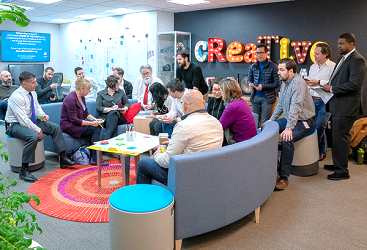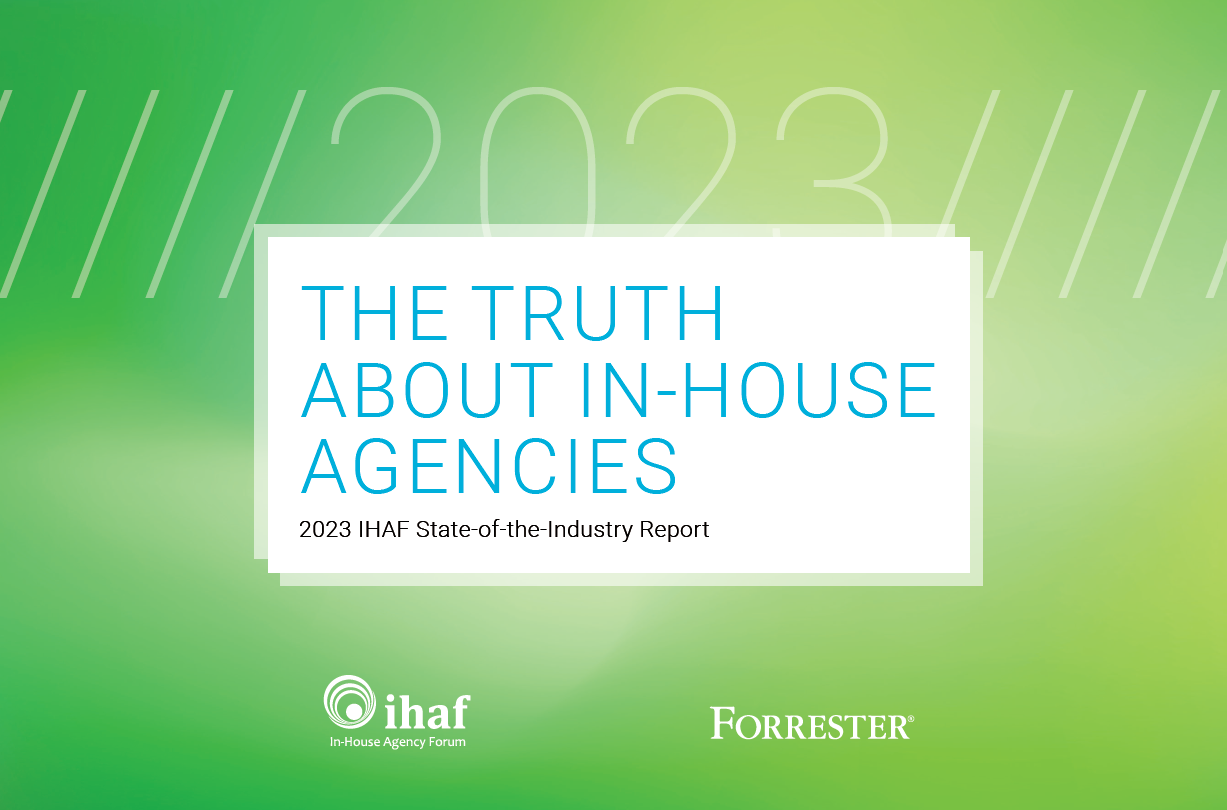They Did What?

In 2017, the Ford Motor Company hired Jim Hackett as CEO. Hackett does not fit the mold of previous Ford leaders. He isn’t a technologist. He isn’t a salesman. He isn’t even a “car guy.” He is, first and foremost, a designer.
Prior to Ford, Hackett ran Steelcase, the furniture company that gave American workers the cubicle. For two decades, Hackett labored to change the most basic aspect of the company’s mindset: he wanted them to consider the user first—deeming the construction of a cubicle to be less important than the feelings, comfort and desires of those who might work inside of them. He tapped creative experts, designers, sociologists, anthropologists and, after 20 years, not only reframed the company but led the way for the team-oriented, open-space workplaces we have today.
Two years ago, the creative team at the International Monetary Fund (IMF) embarked on our own journey to put users first. As part of the in-house agency, we launched the Creative Lab—strategists working alongside designers, videographers, audio-visual specialists and photographers. Staff were trained in design thinking methods and user experience, as we began to reposition ourselves from a production house to a trusted advisor.
Our physical Creative Lab is a bastion of Post-it notes and digital displays in the basement of our imposing Washington, DC headquarters. The philosophy of human-first, however, runs through every product meeting from internal environmental campaigns to the proposed redesign of the IMF’s flagship publications.
Design thinking and user experience is everywhere. Car-makers have completely changed their plans for self-driving cars of the future. Influencers realize that audiences are just as likely to listen to a podcast as they are to read a scholarly paper. And, McKinsey delivered the bottom line rather bluntly in a recent paper. Companies who know creativity and design increase their revenues and shareholder returns at nearly twice the rate of their industry counterparts.
Gone are the days when product or experience design were an afterthought with institutions, like the IMF, adapting. As our team continues to embrace design thinking, our creatives are involved in more areas of the Fund’s business. They bring user experience to the conceptual phase along with knowledge of how both common citizens and thought-leaders are likely to react to a plan or a decision in the presentation phase. We are seeing a greater acceptance and use of this informational and managerial tool that has long been neglected, but is essential in our fast-changing world.
- agency,
- association,
- brand,
- client,
- CMO,
- content,
- corporate,
- creative,
- creative lab,
- design thinking,
- experience,
- ford motor company,
- designers,
- digital,
- Hackett,
- IHAF,
- in-house,
- insource,
- internal,
- IMF,
- international monetary fund,
- leadership,
- management,
- marketing,
- media,
- mckinsey membership,
- networking,
- photographers,
- professional,
- redesign,
- social,
- tolputt,
- trends,
- user experience,
- videographers
Recent Posts

In-House Data: Fact or Fiction?
October 16, 2023
I’m going to be honest with you, which I always am but this time it’s scary honesty. There are a lot of in-house agency research reports out there. And not all of them contain data that are close to the integrity of the studies IHAF publishes—the next of which drops at the IHAF conference on …

IHAF Wrapped
December 20, 2023
One of our favorite things to do at year-end is look back at the events, presentations, and online resources our members tapped most. (Why should Spotify have all the fun?) Here are a few of your favorites in 2023:
• New Assortment of Org Charts Download • Updated Job Profiles …



















%20(1).pdf%20-%20Copy.jpg)

%20(1).png)


No Reader Comments